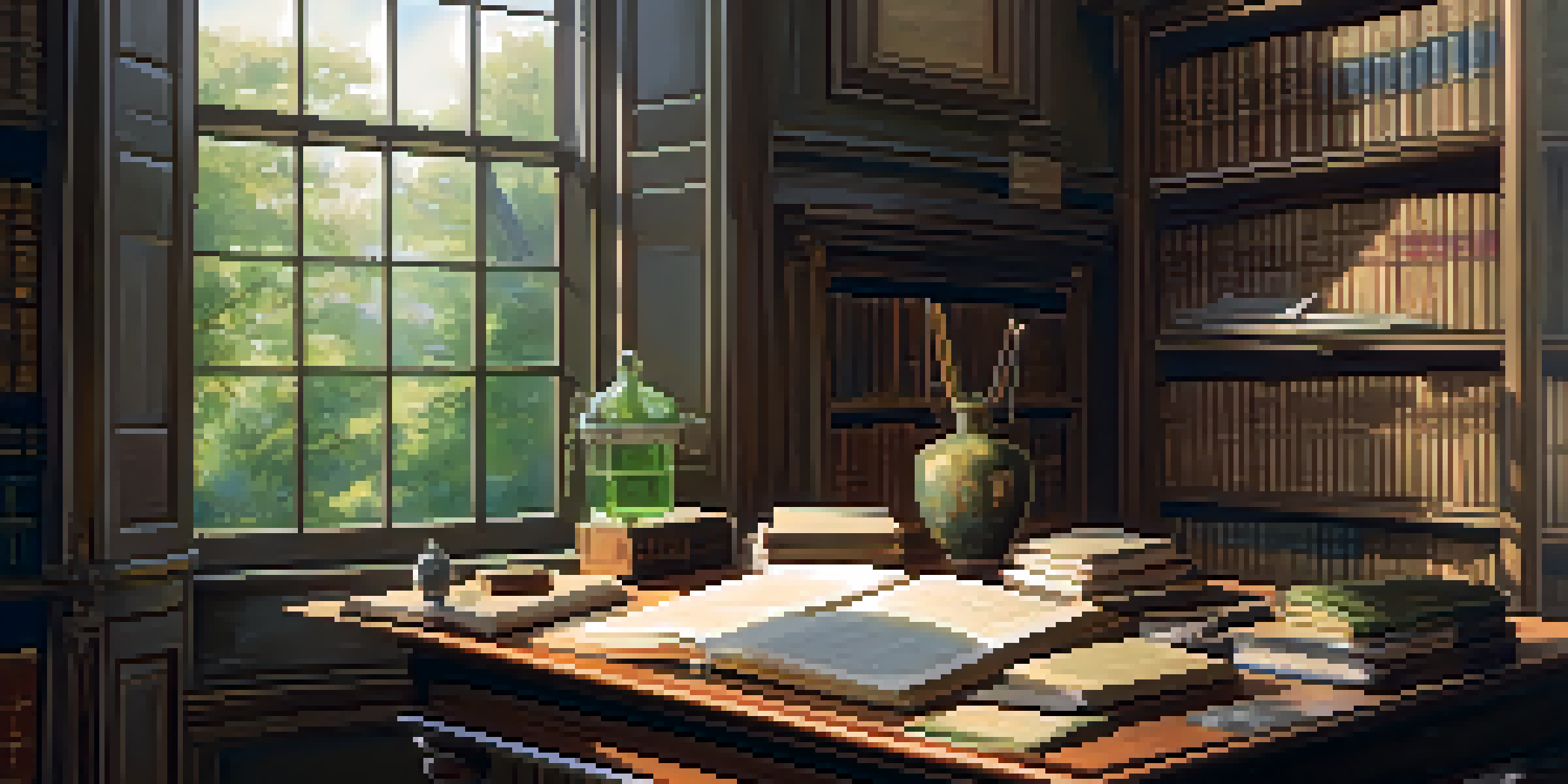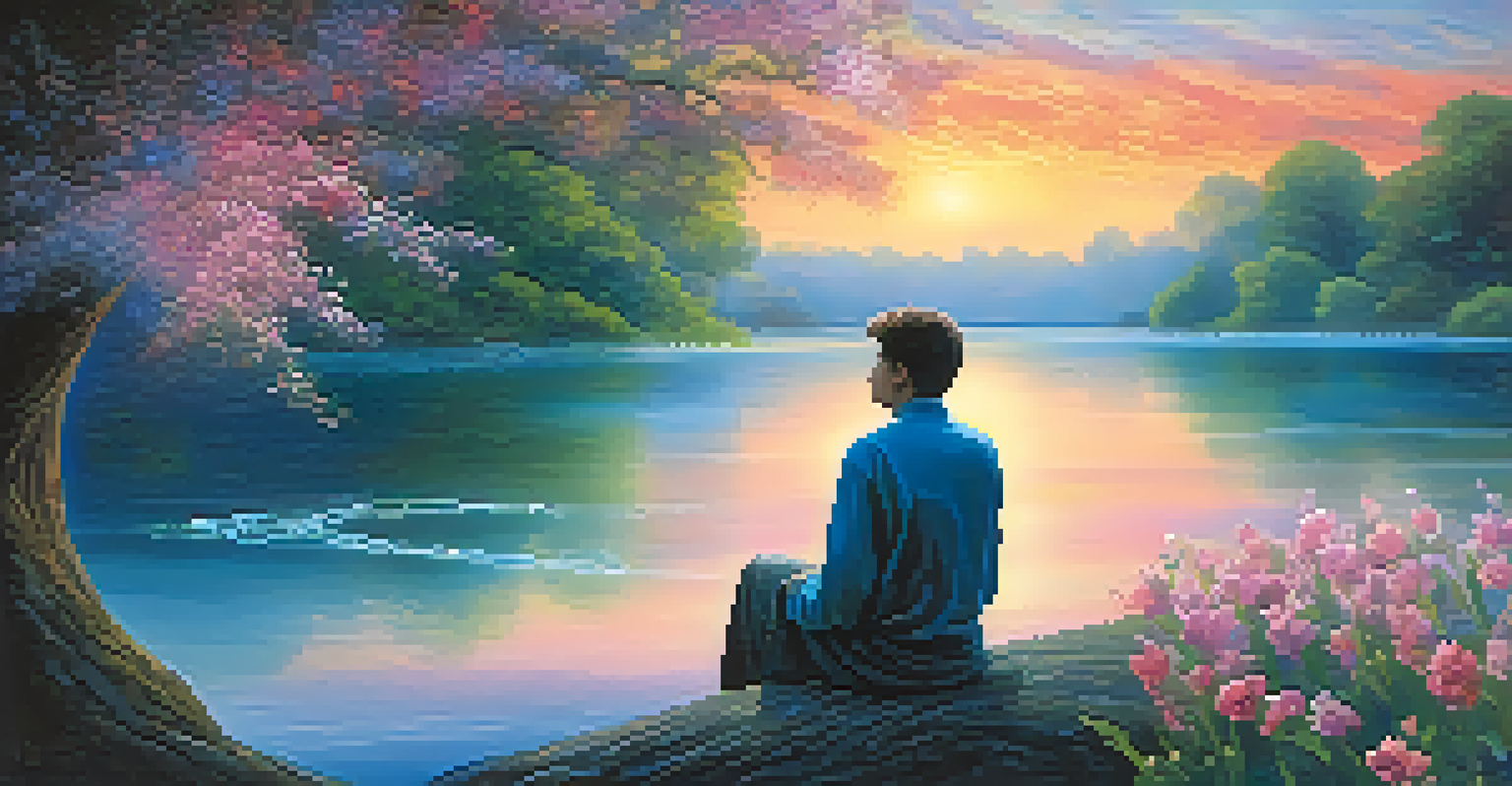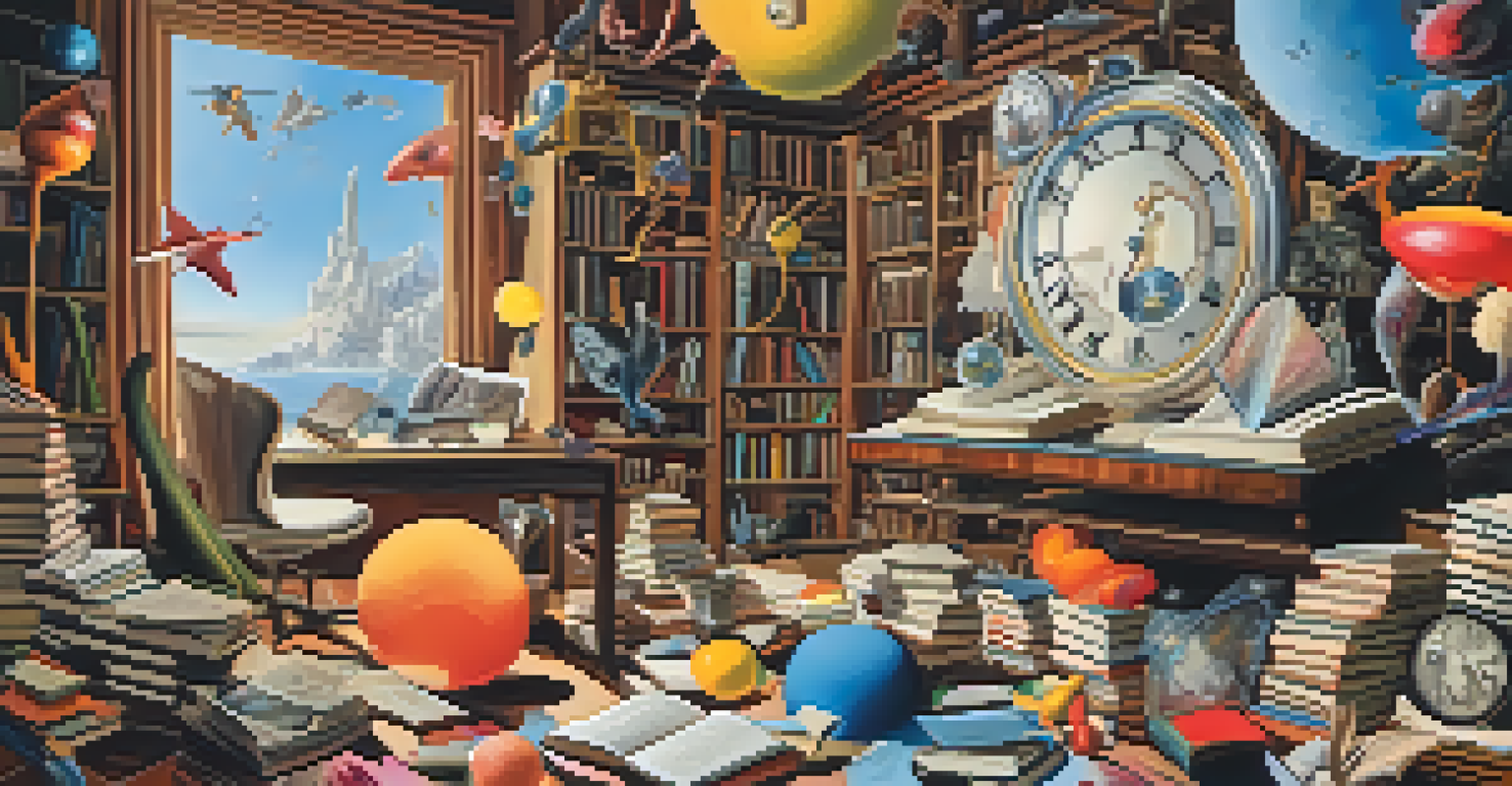19th Century Literature: Hallucinogens in Creative Expression

Introduction to Hallucinogens in Literature
The 19th century was a time of profound change in literature, with writers exploring the boundaries of creativity. As the world was introduced to various hallucinogens, many authors began to incorporate these substances into their creative processes. This intersection of mind-altering experiences and literary expression shaped a unique landscape of storytelling.
The drug experience can be a profound source of inspiration; it can open the mind to new possibilities and creative potentials.
From opium to mescaline, these substances were often seen as tools for unlocking deeper thoughts and emotions. Writers sought to transcend the ordinary, aiming to experience and convey the extraordinary through their narratives. This cultural context sets the stage for understanding how hallucinogens played a role in creative expression during this period.
In examining the works of authors from this era, we can see how these influences manifest in their literature. The exploration of altered states of consciousness not only expanded their artistic horizons but also invited readers to experience the world through a different lens.
Romanticism: A Gateway to Altered States
Romantic poets and writers often delved into the emotional and spiritual aspects of existence, making hallucinogens a fitting companion to their explorations. The movement celebrated individual experience and the sublime, which resonated with the transcendental effects of substances like opium. For poets like Samuel Taylor Coleridge, these experiences provided a means to articulate complex emotions and ideas.

Coleridge's poem 'Kubla Khan' serves as a prime example of how hallucinogenic inspiration can lead to vivid imagery and profound themes. The lines evoke a dream-like state that invites readers to enter a world of imagination. This melding of reality and fantasy highlights how hallucinogens can enhance creativity and artistic expression.
Hallucinogens Inspired Literary Artistry
Writers in the 19th century utilized hallucinogens to explore altered states of consciousness, enhancing their creative expression.
Additionally, the Romantic era's fascination with nature and the mystical further intertwined with the effects of hallucinogens. Writers sought to capture the beauty of the natural world while also exploring the depths of their consciousness, illustrating how these substances complemented their artistic endeavors.
The Influence of Opium on Victorian Writers
As the Victorian era unfolded, the use of opium became more prevalent among writers and intellectuals. Figures like Charles Dickens and Thomas De Quincey openly discussed their experiences with this substance, revealing its impact on their creative processes. For many, opium provided an escape from the constraints of reality, allowing them to explore new realms of thought.
I became insane, with long intervals of horrible sanity.
De Quincey's essay 'Confessions of an English Opium-Eater' stands as a testament to the intertwining of addiction and creativity. His vivid descriptions of his opium-induced experiences not only highlight the allure of the substance but also its potential dangers. This candid exploration offers insight into the darker aspects of creativity, where the line between inspiration and dependence becomes blurred.
Moreover, the Victorian fascination with the exotic and the unknown played a role in the appeal of opium. Writers often sought to capture the essence of distant lands and cultures, using their experiences with the drug to enhance their storytelling. This intersection of cultural curiosity and altered states of consciousness contributed to a rich tapestry of literary exploration.
Psychedelics and the Emergence of New Ideas
Toward the end of the 19th century, writers began to experiment with psychedelics like mescaline and peyote, inspired by indigenous cultures and their rituals. This period saw a growing interest in alternative states of consciousness and the spiritual aspects of these substances. Authors sought to challenge conventional thinking, pushing the boundaries of literature into new territories.
Writers like Aldous Huxley would later reflect on these experiences, emphasizing their potential for expanding human consciousness. The influence of psychedelics on literary expression opened the door for new philosophies and ways of understanding the self. This exploration set the stage for the modernist movements that followed.
Romanticism and Emotional Exploration
The Romantic movement embraced hallucinogens as tools for deeper emotional and spiritual exploration, exemplified by poets like Coleridge.
Furthermore, the documentation of these experiences became a literary genre in itself. The blend of personal narrative and philosophical inquiry invited readers to contemplate their own perceptions of reality, marking a significant shift in literary expression. This era laid the groundwork for future explorations of the mind in literature.
The Role of Hallucinogens in Surrealism
Surrealism emerged in the early 20th century as a movement deeply influenced by the use of hallucinogens. Writers and artists sought to access the unconscious mind, believing that substances could facilitate this journey. The blending of dreams and reality became a hallmark of surrealist literature, challenging readers to interpret meaning in unconventional ways.
Surrealist figures like André Breton championed the idea that altered states could unlock the creative potential of the imagination. Their works often featured bizarre imagery and unexpected juxtapositions, reflecting the chaotic nature of the mind under the influence of hallucinogens. This approach encouraged a departure from traditional narrative structures.
By using hallucinogens as a tool for creative expression, surrealists aimed to dismantle the barriers between reality and fantasy. This revolutionary approach not only transformed literature but also influenced visual arts, music, and other forms of expression. The legacy of surrealism continues to resonate, emphasizing the enduring connection between altered states and creativity.
Cautionary Tales: The Dark Side of Substance Use
While hallucinogens can inspire creativity, the 19th century also revealed the darker consequences of substance use. Many writers struggled with addiction, leading to personal and professional turmoil. The romanticized notion of the tortured artist often masked the harsh realities of dependency and its impact on their work.
Authors like Edgar Allan Poe and Charles Baudelaire grappled with their own demons, using substances to cope with their emotional pain. Their works reflect a duality of beauty and despair, illustrating the fine line between inspiration and destruction. This tension serves as a reminder that creativity can come at a cost.
Darker Consequences of Substance Use
The struggles with addiction among writers like Poe and Baudelaire highlight the duality of creativity and the personal costs of substance use.
Furthermore, the stigma surrounding addiction often hindered open discussions about mental health and substance use. The legacy of these struggles invites contemporary readers to reflect on the complexities of the creative process and the importance of seeking help when needed. This cautionary tale is an essential part of understanding the broader narrative of 19th-century literature.
Conclusion: A Lasting Legacy of 19th Century Literature
The intersection of hallucinogens and 19th-century literature created a rich tapestry of creativity that continues to influence writers today. The exploration of altered states of consciousness opened new avenues for artistic expression, allowing authors to push the boundaries of their craft. This legacy invites modern readers to consider the profound impact of experience on creativity.
As we reflect on this era, it's clear that the use of hallucinogens was not merely a trend but a significant aspect of literary history. The profound insights gained through these experiences added depth and complexity to the works produced during this time. It also raises important questions about the nature of creativity and the human experience.

Ultimately, the legacy of 19th-century literature reminds us that creativity often thrives in the interplay between inspiration and adversity. By understanding the role of hallucinogens in shaping literary expression, we can appreciate the depth of these works and their relevance in today's conversations about art, mental health, and the creative process.